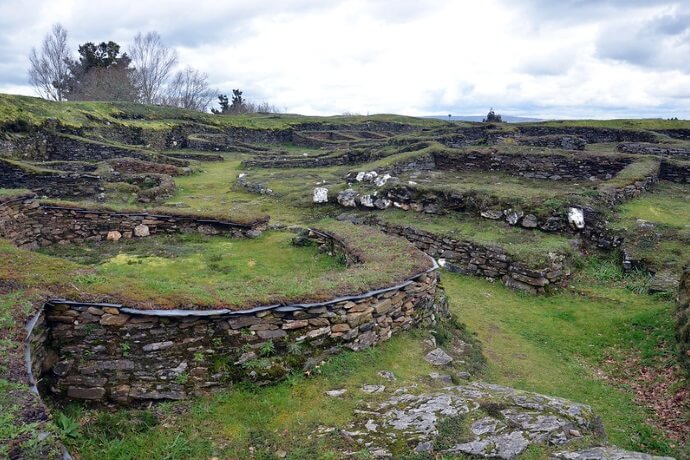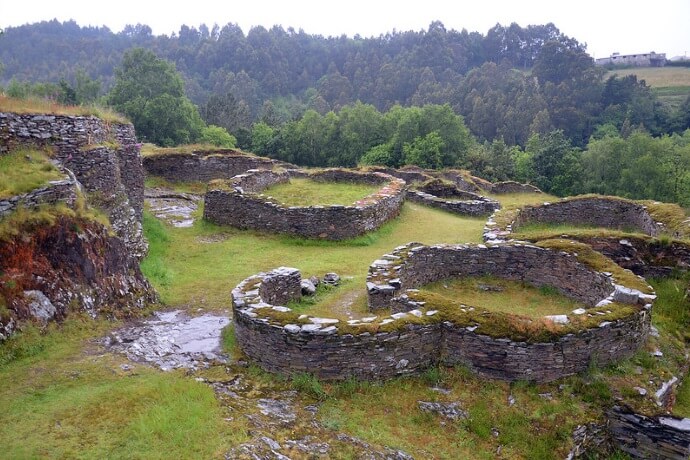In the verdant mountains of Northern Portugal and Spain, history tells ancient tales of a Celtic past that continues to infuse modern life with a unique cultural flavour. This journey through time unveils an often-overlooked facet of these two fascinating countries, uncovering an enduring Celtic legacy that will captivate and enlighten curious travelers.
We invite you on an extraordinary journey, exploring all kinds of cities steeped in the interesting and somewhat mystical aura of a Celtic past. This trip offers a unique chance to trace the footsteps of ancient civilizations, unearthing their fascinating narratives. You will become a bona fide archaeologist, deciphering the whispers of history embedded in these timeless landscapes!
Take a detour off the well-trodden path and embark on a ride through these Celtic lands, starting in Portugal and ending in Spain!
The Celtic Roots of Northern Portugal and Spain, and Celtic Festivities
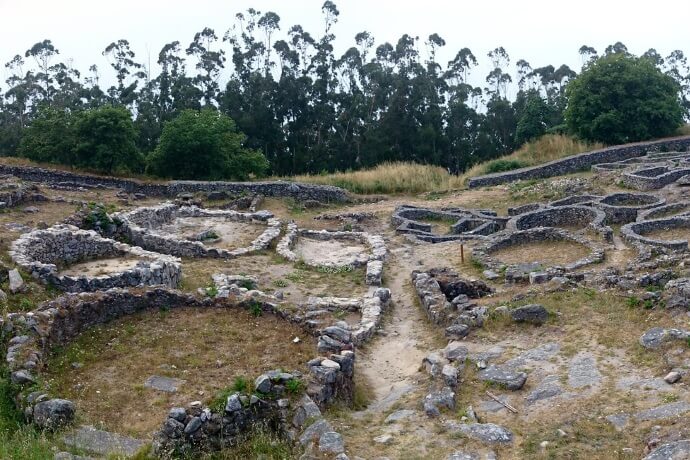
In the Iron Age, long before the Romans brought their language and laws, the Celtic peoples spread across much of Europe, including the Iberian Peninsula. The areas of Galicia in Spain and Minho in Portugal were among their last strongholds, where their culture and traditions have been best preserved. The Celtic tribes, such as the Gallaeci, lived in fortified hilltop settlements known as "castros" in the rugged landscape. Many of these castros have been meticulously excavated, providing fascinating insight into the Celtic lifestyle.
The Celtic influence, however, is more than just historical or archaeological. It is a living tradition seen in many aspects of Galician and Northern Portuguese culture. The gaita, a bagpipe-like instrument, often forms the backbone of folk music in both regions, similar to those played by their Celtic cousins in Scotland and Ireland. The traditional music and dance, often performed at festivals, are filled with unmistakable Celtic rhythms and patterns.
And did you know that mythology and superstition have also been shaped by Celtic beliefs? The belief in magical beings like the 'mouros' and 'mouras', spirits that guard the treasures of the earth in Galicia, has its roots in Celtic mythology. Moreover, Celtic symbols have endured and are still often used in art and architecture today. The ancient Celtic practice of worshipping at stone altars can also be seen in the 'petroglyphs' - rock carvings - found in both countries.
Several well-known festivities are also associated with Celtic culture, either directly or through traditions that have evolved over time. All Saints' Day (in the version of Samhain, Halloween) has strong ties to Celtic culture. Samhain is a festival of Celtic origin that marked the end of summer and the start of the Celtic new year. It was a time when the Celts believed that the veil between the world of the living and the dead became thinner, allowing communication between the two. Modern Halloween evolved from these traditions, as did All Saints' Day, which was positioned by the Catholic Church at the same time to try to replace pagan celebrations.
There are other festivities believed to have some sort of connection to Celtic culture. Magusto is a popular festival celebrated in Portugal on St. Martin's Day, November 11, marked by the roasting of chestnuts, and although it lacks strict adherence to Celtic traditions, it is believed to have pre-Christian pagan origins related to the celebration of the harvest and the honour of the dead, which are common themes in Celtic tradition.
In modern times, there is also the International Festival of the Celtic World of Ortigueira, a modern music festival celebrated in Galicia, Spain, that pays tribute to Celtic culture through music and the arts. Its connection to Celtic culture is, therefore, intentional and contemporary.
Citânia de Briteiros
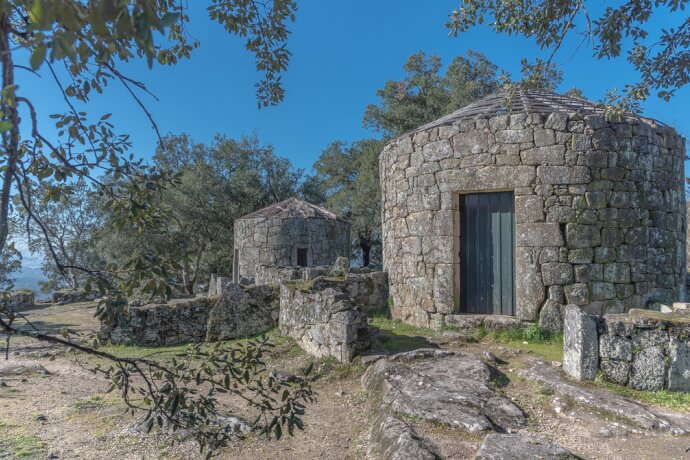
This is actually one of the most iconic and expansive archaeological sites in Portugal, and it offers a fascinating glimpse into the Iron Age and the life of the ancient Celts on the Iberian Peninsula.
Situated in the northern region of Portugal, near the city of Guimarães in the Minho province, Citânia de Briteiros is a hillfort settlement, known as a "castro". It was inhabited between the 1st millennium BC and the 1st century AD, predominantly during the Castro culture period, when the region was home to Celtic tribes. Similar to numerous other hill forts found in the Northwest Peninsula, Citânia de Briteiros is situated on a ridge that provides a commanding view over the Ave River. The site, perched atop a hill with panoramic views of the surrounding countryside, covers around 24 hectares. It was first excavated in the late 19th century by the pioneering Portuguese archaeologist Francisco Martins Sarmento.
Citânia de Briteiros is characterized by its circular and oval stone dwellings, of which there are over 150, strategically built in close-knit clusters. The truth is: the people of this culture were skilled in building stone structures, such as houses, walls, and fortifications, using locally available materials. This settlement pattern, common in Castro culture, indicates a well-structured community. Some of these structures have been partially reconstructed to help visitors better understand their original form.
Noteworthy architectural features at Citânia de Briteiros include defensive walls and gates, suggesting the presence of military structures. There are also indications of advanced urban planning, with clearly defined public and private spaces, a network of paved streets, and a sophisticated water distribution system.
Visiting Citânia de Briteiros is a unique experience that transports you back in time. As you wander through the ruins, you can almost hear the echoes of ancient Celtic life!
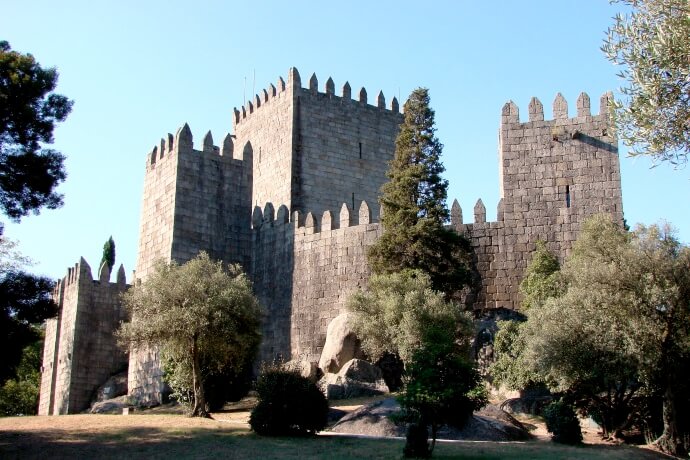
Take the opportunity to also explore the nearby attractive city of Guimarães, often referred to as the "birthplace of Portugal". Its historical significance, coupled with its enchanting old-world allure, led UNESCO to designate its historic centre as a World Heritage Site. The city's historical heart lies in its well-preserved medieval centre, a maze of narrow, winding cobbled streets flanked by traditional stone buildings with colourful façades and ornate ironwork balconies.
At the center of it all is the iconic Largo da Oliveira square, named after a centuries-old olive tree and home to the beautiful Church of Our Lady of Oliveira and the Gothic shrine of Padrão do Salado. Close by is the bustling square of Praça de Santiago, teeming with alfresco dining options. Dominating the city's skyline is the imposing Guimarães Castle, a formidable fortress dating back to the 10th century. This monument is intrinsically linked to the foundation of the nation, being the birthplace of Portugal's first king, Afonso Henriques.
Citânia de Santa Luzia
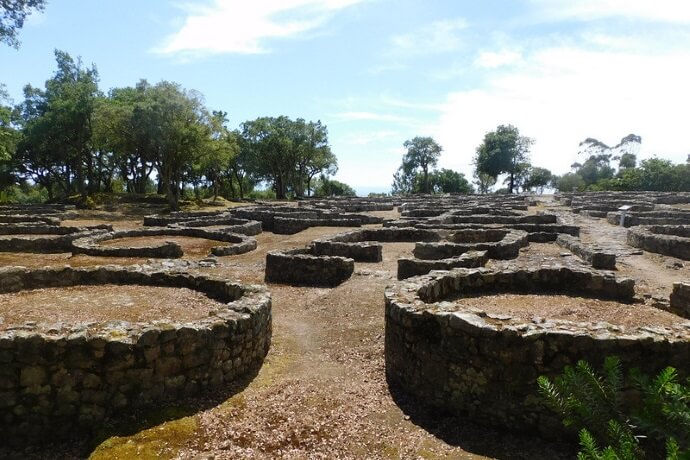
Nestled atop the scenic hill of Santa Luzia, overlooking the picturesque town of Viana do Castelo and the limpid waters of the Lima River, rests an archaeological treasure - the Citânia de Santa Luzia. This ancient site, steeped in millennia of history and spanning an area of about 12 hectares, offers a window into the life and times of the Celtic and Roman civilizations that once thrived in northern Portugal.
As you roam its grounds, you can almost sense the flow of everyday life that once pulsated through the settlement. The ancient inhabitants' presence is palpable in the remnants of their stone dwellings, public buildings, and defensive structures. You can explore the remnants of circular and rectangular homes, which illustrate the architectural aesthetics and functional planning of that period. One intriguing aspect of Citânia de Santa Luzia is its location, chosen for strategic and survival reasons. From its elevated vantage point, the inhabitants could monitor the surrounding landscapes for potential threats, while the close proximity to the Lima River ensured a vital water supply and facilitated trade and transportation.
You will be able to marvel at the remains of the approximately 120 stone structures that have been discovered, offering a blueprint of the circular and rectangular homes that once stood here. Interestingly, several of these homes had a space, known as 'fojo', believed to be used for storing cereals, indicating a community involved in agriculture and granary storage.
While you are exploring Citânia de Santa Luzia, be sure to visit the Interpretation Centre. It hosts a range of artefacts unearthed from the site, including pottery fragments, millstones, and metal objects. These artefacts provide a tangible connection to the daily lives, customs, and occupations of the people who once inhabited this Castro.
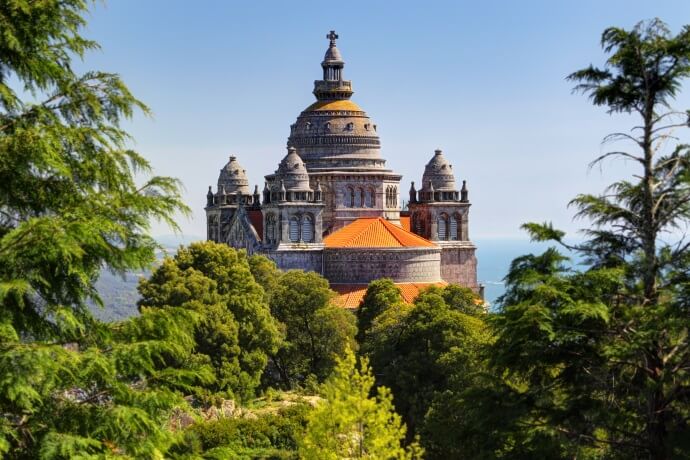
While in the region, be sure to unveil every nook and cranny of Viana do Castelo, anchored on the rugged coast, where the Lima River meets the mighty Atlantic Ocean. Known for its rich seafaring heritage and historic architecture, this city is surrounded by an unspoilt natural landscape. It is crowned by the iconic Basilica of Santa Luzia, a striking Neo-Byzantine monument inspired by the Sacré-Cœur in Paris. The basilica, aside from being an architectural masterpiece, offers an unparalleled panoramic view of the city, the sparkling Lima River, the sweeping Atlantic Ocean, and the emerald green mountains of the Lima Valley.
The city's heart beats in the Praça da República, a bustling square lined with beautiful buildings showcasing a mix of architectural styles, from Gothic to Renaissance. The narrow, winding streets of the old town, often decked with colourful streamers and flags, are a delight to explore. As you amble through these charming lanes, you will come across centuries-old palaces, convents, and churches, including the ancient Sé Cathedral and the Hospital Velho, a Renaissance masterpiece.
Castro Laboreiro
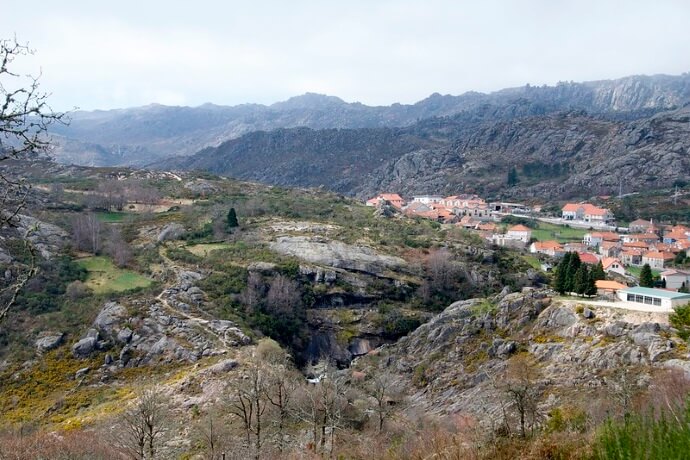
Tucked amidst the highlands of Portugal's northern frontier, the mountainous settlement of Castro Laboreiro, cradled within the embrace of the Peneda-Gerês National Park, is imbued with ancient lore and echoes of civilizations past.
Set against the backdrop of serrated mountain peaks and tumbling waterfalls, the settlement's name - Castro Laboreiro - rings of its Celtic origins. It reveals an intricate dance between nature and human determination, where generations have carved out a life amidst the rugged terrain.
The skeletal remains of this 'castro' settlement, characterized by their harmonious relationship with nature, reveal over 100 residential structures, mostly of an elliptical shape, aligned along the terrain's natural topography. The haunting vestiges of these dwellings, nestled amidst boulders and cliffs, convey a vivid impression of a close-knit community that had once blossomed here, living off the land, its bounty, and the trade opportunities afforded by the nearby river.
The architectural nuances of these dwellings - their resilience mirrored in the sturdy, drystone walls - signify an intriguing aspect of the Castro culture. The structures, featuring an antechamber (an outer room that leads to another room) and a main room, offer a fascinating glimpse into the domestic life of the ancient inhabitants.
The ruins of the old castle, locally known as Castelo de Castro Laboreiro, are perched defiantly atop a rocky hill. This medieval fortress, while largely consumed by time, still offers a glimpse into the strategic defenses once commanded by the ancient inhabitants. From this elevated vantage point, one can drink in the panoramic vistas of the untamed beauty of the surrounding landscape.
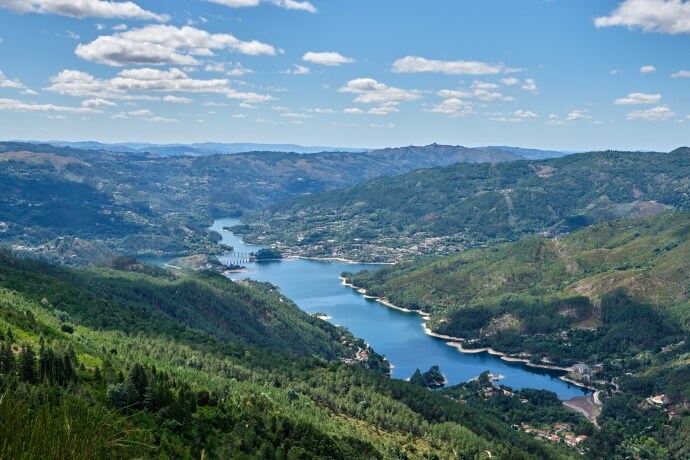
Bear in mind, the Castro Laboreiro experience extends beyond the archaeological site itself. The surrounding area, part of the Peneda-Gerês National Park, Portugal's only national park, enchants with its rich biodiversity, tranquil forests, cascading waterfalls, and diverse fauna.
Peneda-Gerês National Park, often simply called Gerês, is a natural wonderland and a sanctuary of biodiversity tucked in the northernmost reaches of Portugal. Be sure to visit the quaint villages dotted throughout, like Soajo, and immerse yourself in the thermal springs of Terras de Bouro for a unique wellness experience. Explore the rugged hills, lush forests and serene lakes, hike the sublime viewpoints like Pedra Bela, or indulge in wild swimming in the crystal-clear rivers. It is a true haven for nature lovers!
Castro de Santa Trega
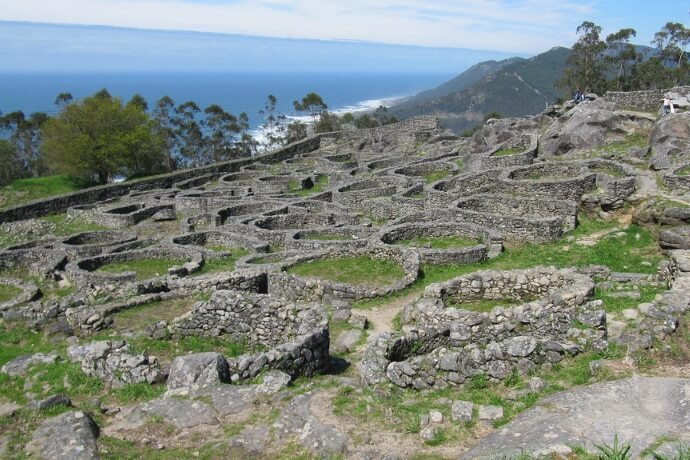
You have arrived in Spain! Journey into the distant past with a visit to the Castro de Santa Trega (Castro de Santa Tecla), an archaeological site poised on the slopes of Mount Santa Trega in Galicia, Spain. This hill fort, part of the wider Castro culture that stretched across northwestern Iberia during the Iron Age, rests nearly 350 meters above sea level, offering jaw-dropping vistas of the mouth of the Miño River and the Atlantic Ocean.
One notable feature of Castro de Santa Trega is its complex defensive system, comprising two main walls and several secondary ones, highlighting the strategic importance and hierarchical organization of this community. Traces of an ancient Roman road also hint at the coexistence and cultural exchange between the Celtic and Roman civilizations. The petroglyphs, or rock carvings, found in the area, depict various geometric and zoomorphic shapes, which further testify to the long-standing human occupation on this hill.
One of the unique features of Santa Trega is the way the community adapted their architecture to the hill's natural terrain. The buildings' construction used the slope's natural gradient, employing terracing techniques to manage the hilly terrain.
Interestingly, some of the houses in the ‘castro’ are reconstructed, which gives you a more palpable sense of what life looked like in this Celtic settlement. Walking into these structures, you can imagine how families huddled around the hearth, the heart of each home.
For a deeper dive into the history and significance of the site, you should pay a visit to the nearby Archaeological Museum of Santa Trega. The museum showcases an extensive collection of artefacts unearthed during various excavations, including intricate jewellery, pottery, and tools.
A visit to Castro de Santa Trega offers more than just a lesson in ancient history; it provides a profound connection to a past civilization. The stunning views and the mystical aura of this site make your journey to this hilltop stronghold an unforgettable venture into the echoes of antiquity.
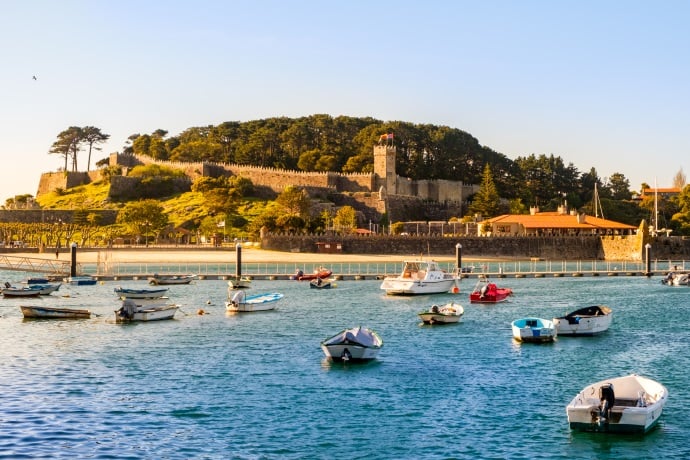
When visiting this unique region, make sure you also have time to discover the beautiful city of Pontevedra, nestled in the heart of the Rías Baixas region of Galicia. Known for its carefully preserved Old Town, it is often regarded as one of Spain's most beautiful cities. As you meander through Pontevedra's pedestrianized cobbled streets, you will be met with a tapestry of architectural styles - imposing Gothic churches sit alongside grandiose Baroque mansions. At the heart of the Old Town lies the picturesque Praza da Leña, dominated by the stunning church of Virxe Peregrina, an iconic symbol of the city.
The city is renowned for its vibrant cultural scene, with a plethora of museums, such as the Museum of Pontevedra, offering an insightful journey through Galician art and history. Just a stone's throw away from the city centre, the lush banks of the Lérez River provide tranquil walking trails and picturesque spots for relaxation. And a short distance away, the Atlantic coastline offers some of the region's most stunning beaches, making Pontevedra a perfect base for exploring the Rías Baixas region's natural splendour.
Castro de Vigo
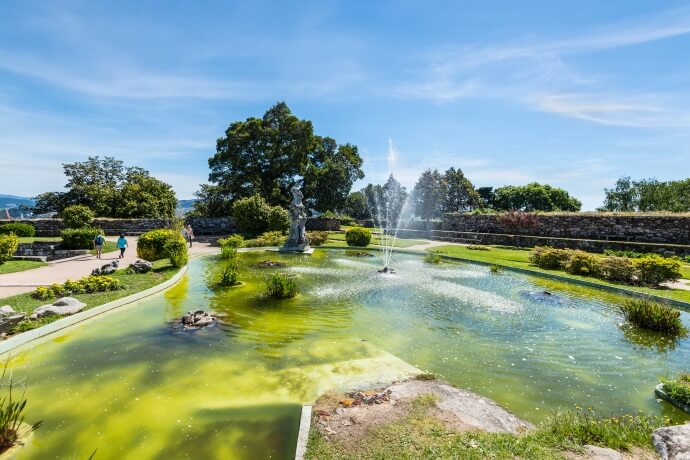
Situated on top of Mount Castro, in the heart of the vibrant city of Vigo in Galicia, lies the Castro de Vigo, a testament to the region's rich Celtic past. The archaeological site, occupying a strategic position with panoramic views of the city and Vigo estuary, holds remnants of a hillfort settlement dating back to the late Bronze Age and the Iron Age.
Among the intriguing vestiges of Castro culture, you can wander amidst the ruins of circular and oval-shaped stone houses, defensive walls, and remnants of ancient roads. One of the site's most distinctive features is the well-preserved 'Forno das Bestas', a large round house believed to be used as a communal oven or a kiln.
Moreover, the site hosts a collection of petroglyphs, ancient rock carvings that add an artistic touch to the archaeological ensemble. These enigmatic symbols and figures, carved onto flat stones, provide fascinating insights into the spiritual beliefs and artistic expression of the prehistoric people.
One impressive aspect of the Castro is its underground archaeology. Below the visible structures, a network of cellars was discovered. These were used for storage and possibly for shelter during dangerous times, showing the strategic planning and foresight of the inhabitants.
Adding to the appeal of the Castro de Vigo is its integration with the beautiful Castro Park. This verdant oasis in the city offers walking paths, manicured gardens, and stone monuments, serving as a tranquil retreat amidst the city's bustle. From the fort, you can enjoy breathtaking views of the cityscape, the harbour, and the Cíes Islands on the horizon.
Castro de Vigo holds a special place in the hearts of the citizens of Vigo, as it symbolizes the enduring strength and resilience of their city. Its majestic location overlooking the town and harbour has made it a prime location for community gatherings and festivals.
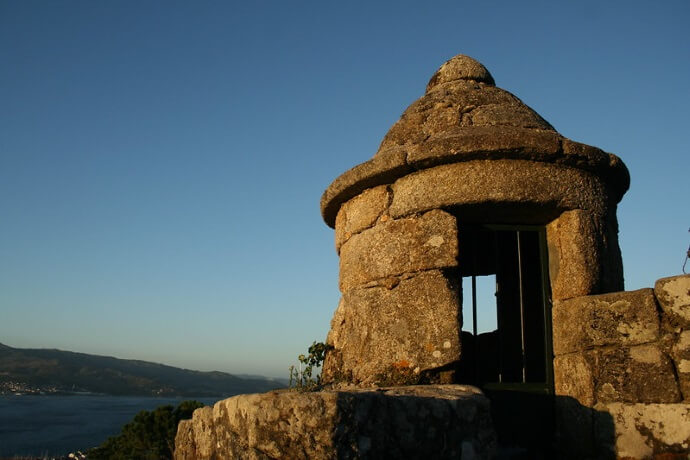
Vigo has plenty of other highlights for you to explore as well, besides this amazing Celtic heritage. Set against the stunning backdrop of Galicia's sun-drenched coastline, Vigo enchants with its tantalizing blend of urban panache, historical charm, and nature's bounty. The largest city in Galicia dances to the rhythm of the crashing waves of the Atlantic and the hum of lively city life! An excursion to the Cíes Islands, often hailed as 'Galicia's Caribbean', is an immersion into an unspoiled paradise. As you dig your toes into the pristine sand and gaze at the sapphire waters, you will understand why it forms an integral part of the Atlantic Islands National Park.
Delve into Vigo's vibrant history with a stroll through the cobblestone lanes of the Old Town or 'Casco Vello'. This charming quarter buzzes with traditional tapas bars and hosts relics of the past like the Co-Cathedral of Santa Maria. And make sure to explore the city's lifeblood - its bustling port, one of Europe's busiest.
An urban sentinel, the Castro Fortress, perched on a hill, offers panoramic views of the city and port, and a unique window into the city's past.
Castro de Baroña, Monte Pindo and Torre de Hercules
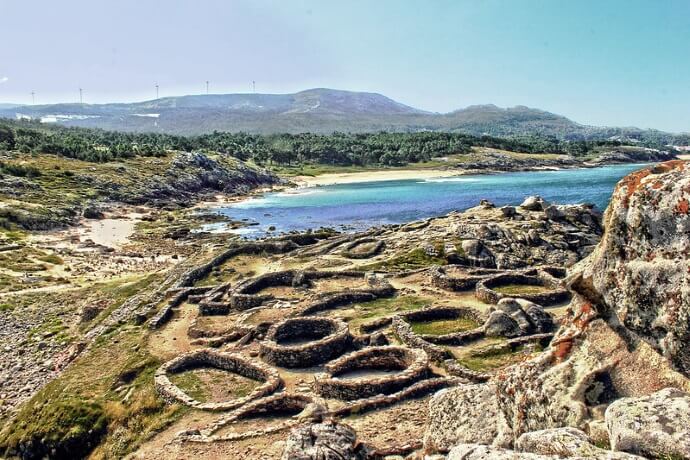
Immerse yourself in the depths of Celtic history as you tread on the age-old grounds of the Castro de Baroña, located in the Baroña peninsula, part of the municipality of Porto do Son. This iconic site, dramatically set on a promontory lapped by the Atlantic waves, stands as a testament to the Celtic Castro culture.
The village exhibits a compelling cluster of semi-circular and rectangular stone houses, thoughtfully arranged. Dual concentric walls enclosing the settlement provide insights into the defensive strategies of the Celtic people. The breathtaking location and well-preserved structures transport you back to a time of vibrant Celtic life.
To further explore the North of Spain and its highlights relating to ancient history, be sure to also visit Monte Pindo. A robust granitic massif standing at 627 meters, Monte Pindo, often dubbed as the 'Celtic Olympus', is steeped in mystery and legends. For centuries, it has been an object of reverence and the setting for rituals and pagan celebrations, linking it back to the Celts who were known for their nature worship. A multitude of peculiarly shaped rocks and boulders, resulting from weathering, are scattered around the mountain, some bearing Bronze Age petroglyphs, further accentuating the area's historical and cultural richness. The most emblematic of these is the 'Pedra do Cadro', a square-shaped stone often associated with a mythical Celtic sun god.
You should also pay a visit to the Torre de Hercules. Emanating majesty and grandeur, the Torre de Hercules in A Coruña stands as the world's oldest functioning Roman lighthouse. Built in the 1st century AD, some say that it was erected on a site that had special significance for the ancient Celts, symbolizing at the time the 'end of the earth' or the westernmost part of the known world. This notion deeply connects with the Celtic belief in the 'Otherworld', a mystical realm believed to be situated across the sea, making this a significant landmark in the Celtic cultural landscape. Today, this UNESCO World Heritage site, rising 55 meters high, continues to guide seafarers, just as it did two millennia ago.
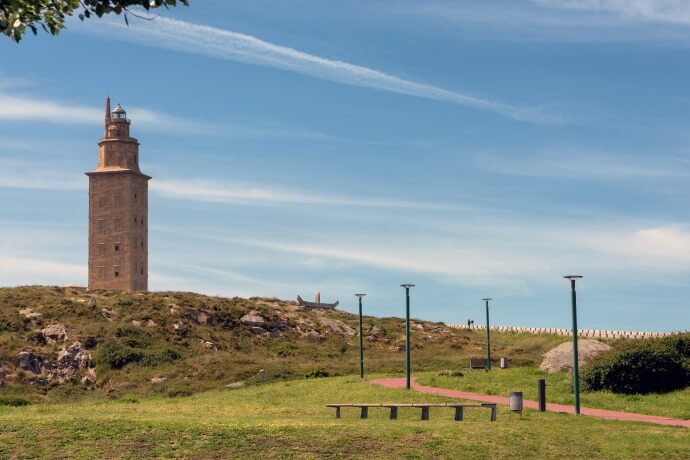
Since you are there, make your way to A Coruña and discover its charms and highlights. A Coruña is a bustling city in the Galicia region, known for its picturesque beaches and interesting history. Its historic Old Town boasts a maze of narrow streets, lovely squares, and striking architecture, including the Church of Santiago and María Pita Square. Along the city's extensive promenade, you can find Riazor and Orzán beaches, perfect for a relaxing stroll or dip in the sea. Foodies will delight in A Coruña's thriving culinary scene, with tapas bars and seafood restaurants aplenty. Cultural offerings include the Museum of Fine Arts and the interactive Domus Museum.
Castro de Viladonga
The Castro de Viladonga, located in the municipality of Castro de Rei, Lugo, is also a prominent archaeological site which houses the remnants of an ancient hillfort settlement that dates back to the late Iron Age. The site represents a significant part of the Celtic heritage of Galicia.
The Castro de Viladonga includes an impressive complex of round and oval dwellings, fortifications, and other structures that are set out on terraced levels following the natural slope of the hill. The houses, built using stone and featuring an outer corridor or portico, showcase the architectural traditions of the period. Besides these residential structures, the site also features remnants of storage pits, workshops, and paved roads, all revealing the intricate organization and functional planning of the Iron Age society.
What makes the Castro de Viladonga even more unique is its long period of occupation, which extended into the Roman period. This led to a coexistence of Celtic and Roman traditions, seen in the architecture, artefacts, and other archaeological evidence.
To further enrich your visit, the on-site museum, Museo do Castro de Viladonga houses the vast collection of artefacts unearthed from the site. Plus, the majestic views from the hillfort over the surrounding landscapes add a touch of natural beauty to the historical experience!
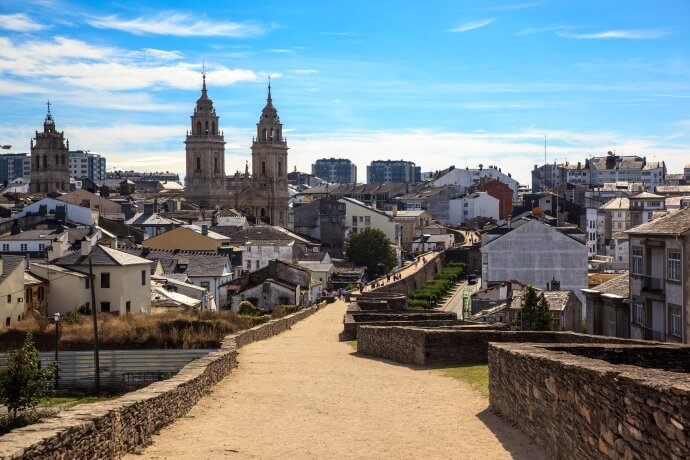
Once in Lugo, be sure to explore its other highlights. It is most renowned for its incredibly well-preserved Roman walls. Designated as a UNESCO World Heritage Site, these walls encircle the old town and span over 2 kilometers! You can take a walk on the wide path atop these walls, offering fantastic views of the city. Lugo's old town is a maze of narrow streets, dotted with a mix of modern and traditional Spanish buildings. The city's Roman heritage is evident in the Romanesque Cathedral of Santa María, a 12th-century structure with an unusual blend of architectural styles due to additions made over centuries.
The Provincial Museum, located in the Episcopal Palace, boasts an extensive collection of art and artefacts from Galicia, emphasizing Lugo's rich cultural heritage. For nature enthusiasts, the banks of the River Miño, which flows around the city, provide beautiful walking trails.
Castro de Coaña
The Castro de Coaña is also an impressive archaeological site located in the region of Asturias. It is an iconic relic of the pre-Roman society.
The site encompasses an area of about 2 hectares and is composed of around 80 buildings, including residential and public structures. The residential buildings are primarily round or oval, and they often feature stone benches, central hearths, and even storage pits, while some larger dwellings suggest the presence of a social hierarchy.
The Castro de Coaña is renowned for its intricate urban planning, with terraced platforms, defensive systems, and organized public spaces. It had a sophisticated system of stone-walled streets and a network of ditches for drainage. Of note are the acropolis at the highest point of the settlement and several outer defensive walls, indicative of the strategic planning of the settlement.
Although it was largely abandoned by the time the Romans arrived, the Castro de Coaña remained in memory. In fact, it was continuously occupied until the late Middle Ages, albeit with a smaller population. Excavations in the 20th century brought this remarkable site to light, offering rich insights into the Castro culture.
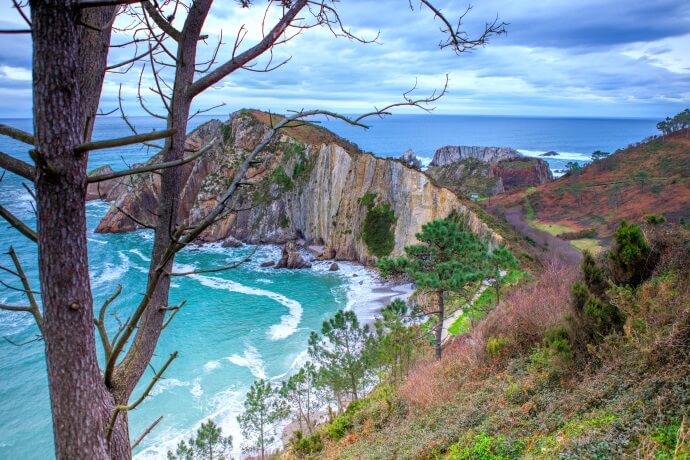
Asturias is actually a mesmerizing region in Northern Spain, boasting a vibrant blend of wonderful landscapes and coastal charm. It is home to the UNESCO-listed Picos de Europa National Park, an outdoor haven that offers thrilling activities such as hiking, mountain biking, and climbing. History buffs will relish the pre-Romanesque architecture in Oviedo, particularly the magnificent Santa Maria del Naranco. The region's industrial past is captured in the Mining Museum, while the Jurassic Museum brings prehistoric times to life. Asturias' rugged coastline features breathtaking cliffs and stunning beaches, like Playa del Silencio.


